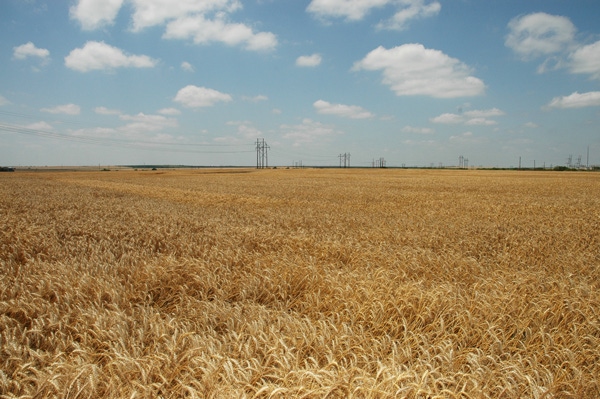
A new race of stripe rust adds another element of risk for Texas wheat producers who now have fewer resistant varieties available to help battle the devastating disease.
That’s according to Robert Duncan, Texas AgriLife Extension agronomist and small grains specialist, who said the new race of stripe rust caused yield loss in varieties that were previously resistant.
“Jagger and Jagalene now exhibit a susceptible reaction,” Duncan said during the recent Texas Plant Protection Association annual conference in College Station. Only three hard red winter varieties, Fannin, Doans and TAM 111, remain resistant.
“Management will require an integrated approach including use of resistant varieties and fungicide applications,” Duncan said. He and others are looking at best management practices to combat the new threat to wheat yields.
Part of that effort includes examining “the interaction between host resistance and fungicide application timing,” Duncan said. They used four varieties—TAM 111, TAM 112, TAM 304 and Fannin—along with multiple fungicide timings to identify best programs for stripe rust management.
“TAM 111 is resistant to stripe rust but not leaf rust,” Duncan said. Texas wheat growers often have problems with both.
Fungicide trials
The test included multiple fungicide applications including an untreated check, single and multiple applications beginning at flag leaf emergence and continuing until the head fully emerged. Fungicide applications consisted of 10.5 ounces per acre of Quilt (active ingredient Azoxystrolin and Propiconazole) with a 0.25 percent nonionic surfactant.
“We recorded severity ratings on a weekly basis following the first application,” Duncan said. “Ratings and yield data indicate varietal resistance in Fannin was enough to manage the new race of stripe rust. However, susceptible varieties such as TAM 112 required at least one fungicide application to manage the disease.”
He said TAM 304 showed “tolerance but not resistance,” to the new stripe rust race. TAM 112, a susceptible variety, produced 55 bushels per acre with a fungicide treatment but only 32.4 bushels untreated.
Fannin, untreated, averaged 57 bushels per acre. With a single application, yield was 58 bushels per acre and with two applications was 58.3 bushels per acre. “We see no significant difference in yield. It is a waste of money to spray fungicide on Fannin for stripe rust control,” Duncan said.
With susceptible varieties, timing makes a difference, he said. “Protecting the flag leaf might seem to be equal to a double fungicide application,” Duncan said. “But that’s not always the case.”
He said growers also have to consider whether applying a fungicide to a susceptible variety has “a significant effect or is an economical treatment. Knowing the disease resistant traits of each variety is a key to managing disease economically.”
Treatment costs range from about $10 per acre for generic fungicides to $18 for brand name products.
Duncan said a new variety, TAM 113, which will be available this year, is resistant to both stripe and leaf rust. It’s adaptable to the High Plains and is comparable to TAM 111. He said TAM 304 is a good option for Central Texas.
.
About the Author(s)
You May Also Like






